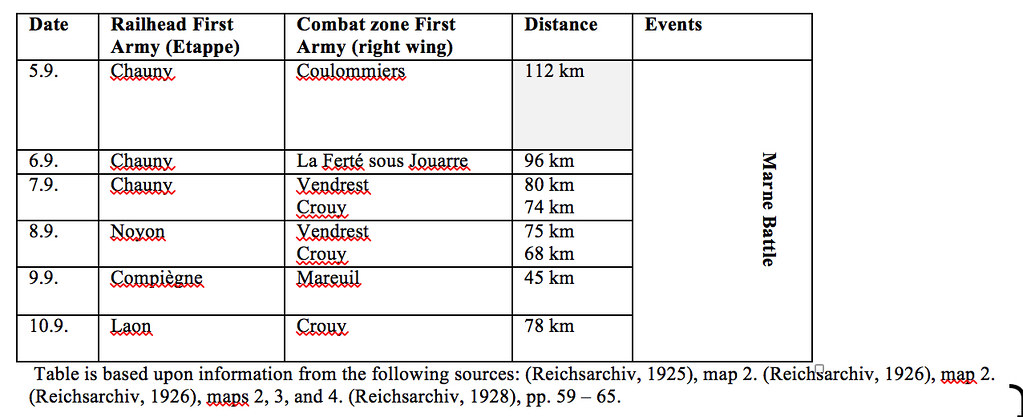FIFTY-SIX DAYS OF OPEN WARFARE
["Betrachtung über 56 Tage Bewegungskrieg". Ausbildungsfrage. Militär-Wochenblatt, 18 September 1933.] Abstracted by Major A. Vollmer.
EVENTS.
In the first days of August 1914 the advance of the Fourth Army led through Luxemburg and South Belgium to the Meuse. The 21st Infantry Division belonged to the Fourth Army; this division included the 1st Nassau Infantry Regiment No. 87, whose operations are here presented. The completion of the mobilization of this regiment was followed on 6 August by the transport of its battalions through Bingen and Kreuznach to the vicinity of Trier. From here the advance began via Saarburg near Trier and Luxemburg on Arlon.
FROM ARLON TO THE MARNE.
1st-8th Day.-Early on 12 August, after a 25 km. night march, ArIon, the first Belgian city, was occupied without fighting. For the main body of the regiment the days from 13 August to 19 August were devoted to rest and training.
9th-10th Day.-At noon, on 20 August, after a march of six hours, and after the order for a halt had been issued, reports were received of the advance of enemy forces from the west, which demanded the employment of the regiment near Neufchateau in the direction of Longlier. The enemy was repulsed after a rapid advance. Certain units of the regiment distinguished themselves in the assault on the railroad station at Neufchateau. After the combat the regiment went into bivouac at and near Neuvilliers. On 21 August the regiment continued to march. Duration of combat on 20 August: 6 hours. Length of march on 20 August and 21 August: 50 km.
11th Day.-At 7:00 AM, 22 August, the regiment assembled west of Neuvilliers and then commenced the advance, acting as right flank guard of the division. A report of an advance of an enemy column on Ochamps forced the regiment to go into an assembly position preparatory to attack. An early enemy attack was brought to a halt by our counterattack and the enemy was forced to withdraw. Ochamps and the heights nearby to the west were captured. Many machine guns and prisoners fell into our hands. The regiment bivouacked on the battlefield. Duration of attack: 4 hours.
12th Day.-After several hours of marching on 23 August, the main body of the regiment was attacked by the citizens and stragglers while marching through Herbeumont, while the advance guard had an encounter with an enemy cyclist detachment, at the south-exit of the village. The combat ended in the destruction of the village. Duration of combat: 1 hour. Length of march: 18 km.
Source: Review of Military Literature. March 1934.
Cheers. Raúl M
